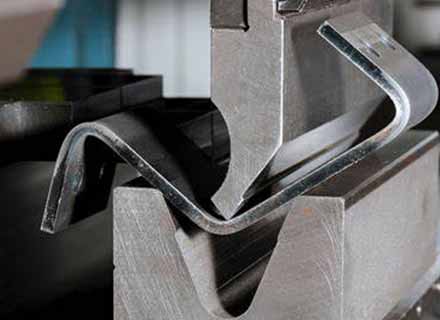Sheet Metal Fabrication is a cornerstone of modern manufacturing. From aircraft fuselages and car body panels to household appliances and medical equipment, sheet metal parts are everywhere. Many people ask what is Sheet Metal Fabrication, how to do Sheet Metal Fabrication, or how does sheet metal fabrication work. This article will give you a complete overview, covering definitions, techniques, workflow, and the role of professional fabricators.

What Is Sheet Metal Fabrication?
So, what is sheet metal fabrication? It is the process of transforming flat sheets of metal—such as aluminum, stainless steel, carbon steel, or brass—into functional parts and assemblies. The process combines engineering, material science, and hands-on craftsmanship to create components that are durable, precise, and cost-effective.
Fabrication can be applied to produce:
Automotive parts (chassis, brackets, fuel tanks)
Aerospace components (panels, ducts, enclosures)
Consumer products (appliances, furniture, lighting housings)
Industrial equipment (machine enclosures, conveyors)
Architectural structures (facades, roofing, staircases)
In essence, sheet metal fabrication is the backbone of industries that require strong yet lightweight solutions.
How Does Sheet Metal Fabrication Work?
If you are wondering how does sheet metal fabrication work, here’s the step-by-step breakdown:
Design & Prototyping
Engineers create CAD drawings and prototypes, ensuring the part’s geometry, thickness, and tolerances are correct.
Material Selection
The right sheet metal material is chosen based on strength, corrosion resistance, weight, and cost.
Cutting
Sheets are cut to size using techniques like shearing, laser cutting, plasma cutting, or waterjet cutting.
Forming & Bending
Using press brakes, rollers, or Stamping machines, sheets are bent into specific angles and shapes.
Punching & Stamping
Holes, slots, or embossing are added using CNC punching machines or stamping dies.
Assembly
Parts are joined together using welding, riveting, bolting, or adhesives.
Finishing
Processes like powder coating, painting, polishing, or anodizing improve both aesthetics and durability.
Quality Inspection
The final products undergo dimensional and functional inspections to ensure accuracy.
This workflow explains not just how to do sheet metal fabrication, but also how manufacturers guarantee quality and efficiency.
What Is a Sheet Metal Fabricator?
What is a sheet metal fabricator? A sheet metal fabricator is a skilled tradesperson who works with various tools and machines to create sheet metal parts. They:
Interpret technical drawings and blueprints.
Operate CNC machines and manual equipment.
Perform welding, bending, and finishing operations.
Ensure accuracy, quality, and safety in the production process.
Fabricators are the bridge between design and reality, turning engineering ideas into physical components.
How to Do Sheet Metal Fabrication: Practical Steps
If you’re looking to understand how to do sheet metal fabrication, here’s a practical outline:
Plan your project – Start with precise measurements and design.
Cut the material – Use shears for simple cuts, or CNC laser for high precision.
Bend and form – Press brakes help achieve clean angles and curves.
Join parts – Choose between welding for strength, or bolts/rivets for easy disassembly.
Apply surface treatment – Prevent corrosion and enhance appearance.
Test and inspect – Always verify dimensions and strength before final use.
For DIY hobbyists, safety gear is essential—always wear gloves, goggles, and ear protection.
How to Sheet Metal Fabrication Techniques
There are several major techniques under the umbrella of fabrication. Learning how to sheet metal fabrication techniques helps you select the right one:
Laser Cutting: For intricate, precise shapes with smooth edges.
Plasma Cutting: Suitable for thicker metals and fast production.
Waterjet Cutting: Allows cutting without heat distortion, ideal for sensitive materials.
Bending: Achieved with press brakes, rollers, or folding machines.
Stamping & Embossing: Creates patterns, logos, or detailed surface features.
Welding (MIG, TIG, Spot Welding): Strongly joins components.
Riveting & Fastening: Offers detachable connections.
Surface Finishing: Powder coating, painting, or galvanizing for protection.
Each technique has its own advantages, and often multiple methods are combined in a single project.
Applications of Sheet Metal Fabrication
Understanding how does sheet metal fabrication work also means seeing its wide applications:
Automotive industry: Car bodies, frames, brackets.
Construction: Roofing, ductwork, window frames.
Electronics: Enclosures, racks, heat shields.
Medical devices: Hospital equipment, surgical tools.
Renewable energy: Solar panel frames, wind turbine housings.
Advantages of Sheet Metal Fabrication
Durability: Strong and long-lasting parts.
Flexibility: Supports custom designs and small/large batches.
Lightweight: Compared to casting or machining solid blocks.
Cost-Effective: Efficient processes reduce material waste.
Scalability: Suitable for both prototypes and mass production.
Now you should have a complete picture of what is sheet metal fabrication, what is a sheet metal fabricator, how to do sheet metal fabrication, how does sheet metal fabrication work, and the many sheet metal fabrication techniques.
From raw sheets to precise, functional parts, sheet metal fabrication remains one of the most versatile and valuable manufacturing processes worldwide. Whether for industrial use, consumer products, or architectural applications, it ensures efficiency, strength, and customization.








